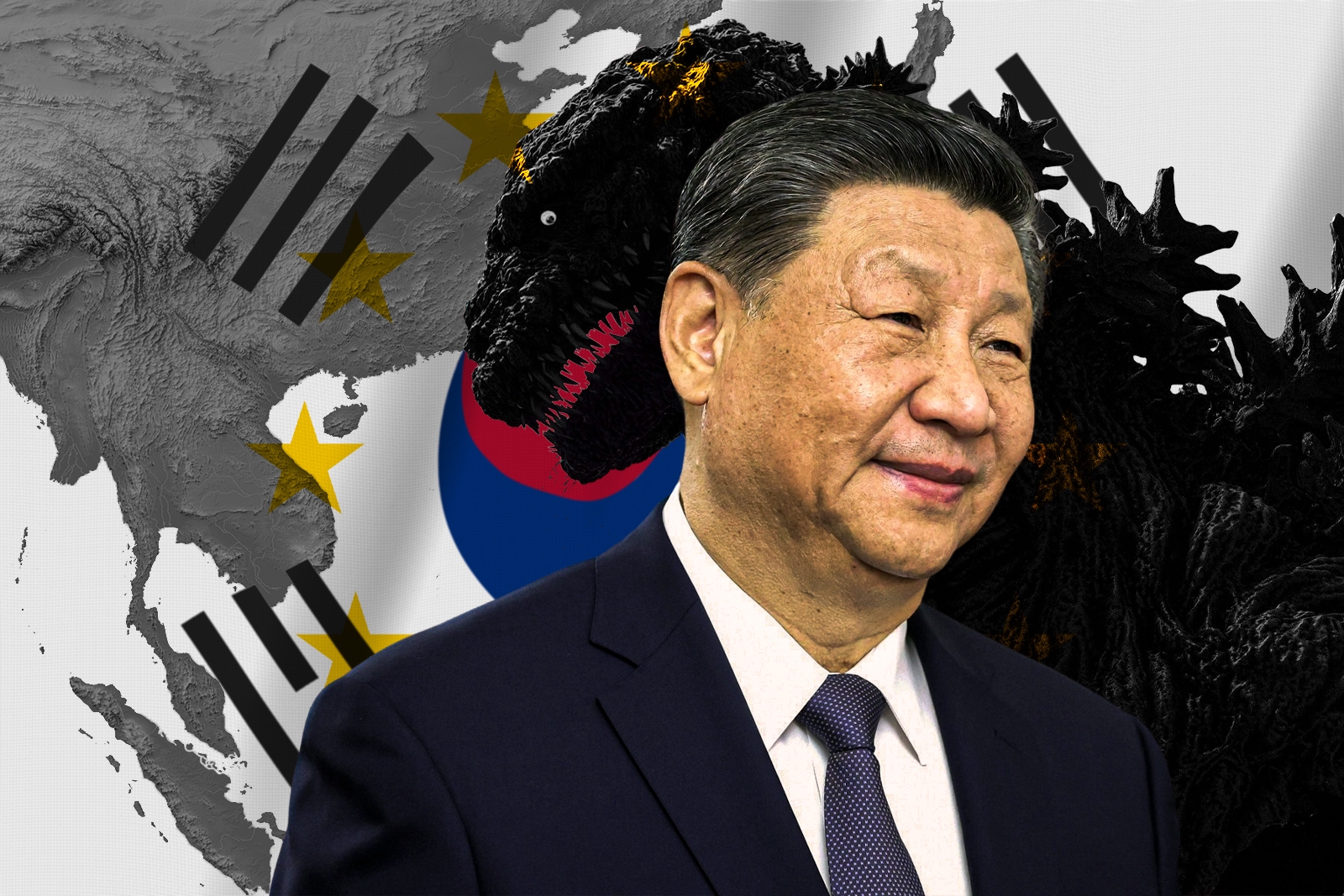
Can Asia Copy the Best Bits of NATO Without Cracking?
As Russia’s war on Ukraine grinds on, NATO countries are rearming at speed—and, in the process, reviving something old with a distinctly modern edge: a functional division of labor. No treaty mandates who does what. Yet in practice, allies are apportioning roles according to comparative advantage, with the aim of wringing more capability out of constrained budgets and legacy force structures.
Consider the current mix. Poland has positioned itself as Europe’s ground “center of gravity,” pouring resources into tanks, artillery, unmanned systems, and short-range air defense. The United Kingdom and France are doubling down on maritime, air, and nuclear deterrence, including expeditionary naval forces and credible strategic assets. Germany, after its Zeitenwende, is rebuilding the industrial scaffolding for armored platforms, munitions, and logistics infrastructure across rail, roads, and depots. At the hub sits the United States, linking the system with forward-based forces, strategic lift, ISR, nuclear deterrence, and command-and-control.
This is more than administrative neatness. It’s a strategic answer to new threats, tight finances, and uneven starting points. But the model also raises an obvious question for Washington, Canberra, Tokyo, and Seoul: Is this template exportable to the Indo-Pacific—or would replicating it create brittle interdependence across Asia’s democracies?
NATO’s Unwritten Playbook
Formally, NATO assigns no state a singular mission. Informally, practice has settled into a division of responsibility. Poland is expanding heavy ground units and layered air defenses, and is aligning its defense industry closely with allied production lines despite procurement delays and domestic politics. The UK and France bring expeditionary reach at sea and in the air, and credible nuclear deterrents. The Baltic states, living under direct Russian threat, have invested in cyber capacity, civil preparedness, and networked early-warning systems. And the United States connects the enterprise with strategic lift, ISR, nuclear deterrence, and command-and-control infrastructure.
The upside is intuitive. Specialization reduces duplication, focuses force design, and accelerates response. Think of it as a production line for security: Country A fields armored brigades, Country B owns logistics at scale, Country C ensures air dominance. Each link, optimized, can be more agile and precise than a one-size-fits-all approach.
Could Asia Mirror the Model?
A similar pattern is conceivable among U.S. partners in the Indo-Pacific. Japan could take a lead in anti-ship operations, maritime ISR, and homeland air defense with Aegis destroyers, new strike capabilities, and layered missile defenses. South Korea might prioritize armored warfare and urban- and cyber-resilience on the peninsula, while providing rear-area ISR and logistics in a Taiwan contingency—if politics allow. Australia, advantaged by geography and the AUKUS submarine program, could anchor long-range sustainment, maritime-air interdiction across Southeast Asia, and subsurface capabilities. As in Europe, the United States would underwrite the scheme with nuclear deterrence, space and cyber dominance, and global-strike capacity.
Such a design would let partners concentrate on what they do best, rationalize procurement plans, and ensure that combined operations are more than the sum of their parts. But the gains come with familiar risks.
When Efficiency Becomes Fragility
Specialization breeds dependence. The more each country narrows its role, the more the whole becomes hostage to the weakest link. If one ally’s politics or supply chains falter—say Poland’s armor plants stall or Germany’s munitions lines slow—others’ readiness can be degraded by events beyond their control.
That interdependence can look like architectural elegance until one pillar shifts. NATO’s model works only so long as trust holds, adjustments are swift, and logistics flow. In Asia, where political confidence between key partners remains uneven—witness the still-delicate relationship between Japan and South Korea—a division of labor without redundancy would be a house of cards. Political consolidation, institutionalized coordination, and built-in backstops are prerequisites, not afterthoughts.
Burden asymmetries create another fault line. Within NATO, countries such as Poland and the UK have assumed heavier operational roles while others emphasize diplomatic and industrial contributions. That imbalance already produces friction. Indo-Pacific partners will have to calibrate contributions against both capacity and proximity to risk—or risk eroding solidarity before the shooting starts.
There is also the danger of fighting the last war. Specialization tends to channel investment into familiar hardware—tanks, ships, aircraft—at the expense of the murkier domains where today’s conflicts are often decided. Russia has shown how cyber operations, information warfare, and covert disruption can blunt platforms before they reach the battlespace. A rigid role definition can narrow the aperture and slow adaptation to gray-zone coercion, which rarely presents clean military “lanes.”
How Adversaries Exploit the Gaps
Russia already plays inside NATO’s seams. By pressuring Germany politically and probing its cyber defenses, Moscow can constrain the alliance’s industrial engine and, in turn, sap Poland’s frontline preparedness. The tactic is systemic: target the node that feeds the network, and the network starves.
Beijing could import the method to Asia. It could exploit Japan’s constitutional constraints and domestic debates to induce caution; probe Australia’s undersea communications and energy infrastructure; and wage legal and psychological campaigns in a Taiwan crisis to delay South Korea’s decisions. The goal wouldn’t be to beat every ally everywhere—it would be to paralyze the one that others depend on.
A related risk is “preemptive decoupling.” If Moscow concludes NATO cannot surge in time, it might attempt a short, sharp offensive before reinforcements arrive. In the Indo-Pacific, China could gamble on a rapid move against Taiwan, betting that a specialized but slow-to-assemble coalition would fail to cohere fast enough.
Finally, politics will always be part of the battlespace. NATO’s efficiency depends on consensus; that makes it susceptible to disinformation, electoral interference, and legislative brinkmanship. Asia is no different. A delayed deployment from Seoul, or a sudden supply-chain shock in Australia, could reverberate across an interlocked plan and collapse it at speed.
What Asia Should Take—and What It Should Leave
The lesson for Asia is not to copy-paste NATO’s playbook, but to adapt it with guardrails. Specialization should be paired with interoperability, strategic elasticity, and reserve capacity. No single ally should become an operational chokepoint, and role assignments should be stress-tested against domestic politics as much as against adversary capabilities.
To that end, the region needs a standing defense-planning mechanism with real teeth—an Indo-Pacific analogue to NATO’s Defense Planning Process. A formalized “Quad-Plus” or a new Pacific Security Council could set shared force goals, deconflict procurement, and stress-test logistics. Scenario-based exercises and decision-making simulations should pull in political leaders alongside military commanders, because alliance speed is as much about cabinet consensus as it is about lift capacity and munitions stockpiles.
The soft tissue matters as much as the hard kit. Standardized engagement protocols, common threat assessments, and pre-negotiated contingency procedures can compress decision time and keep coalition operations inside an adversary’s OODA loop. Trust is not a by-product of drills; it is their first objective and the core enabler of any division-of-labor system.
Nor should “rear areas” be treated as safe or secondary. Cyber resilience, information assurance, and supply-chain security are frontline functions in any future crisis. Hardening ports, data links, satellite networks, and industrial nodes would do more for deterrence than stockpiling a few extra platforms that networks cannot support under duress.
From Hardware to Habits
NATO’s evolving division of labor offers useful inspiration—and a cautionary tale. Specialization sharpens missions and can stretch resources. But without political cohesion and trust, it can also magnify vulnerability at the moment of truth.
For the Indo-Pacific’s democracies, facing converging threats and chronic uncertainty, a neat division of labor is a start, not a strategy. The center of gravity must be redundancy, adaptability, and habits of unity that hold under pressure. Equipment deters; consistency wins.
